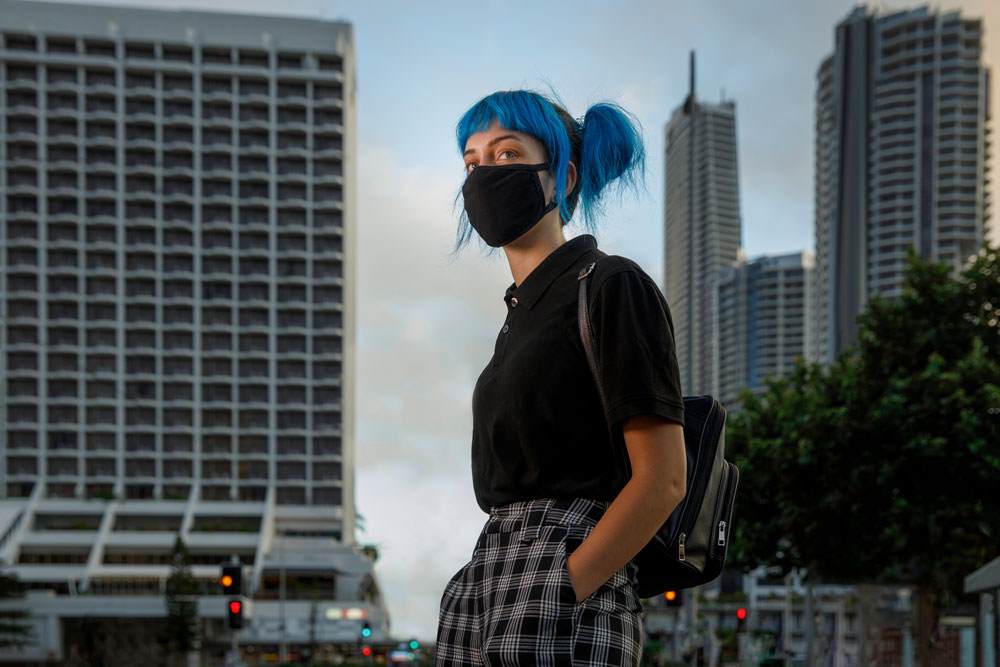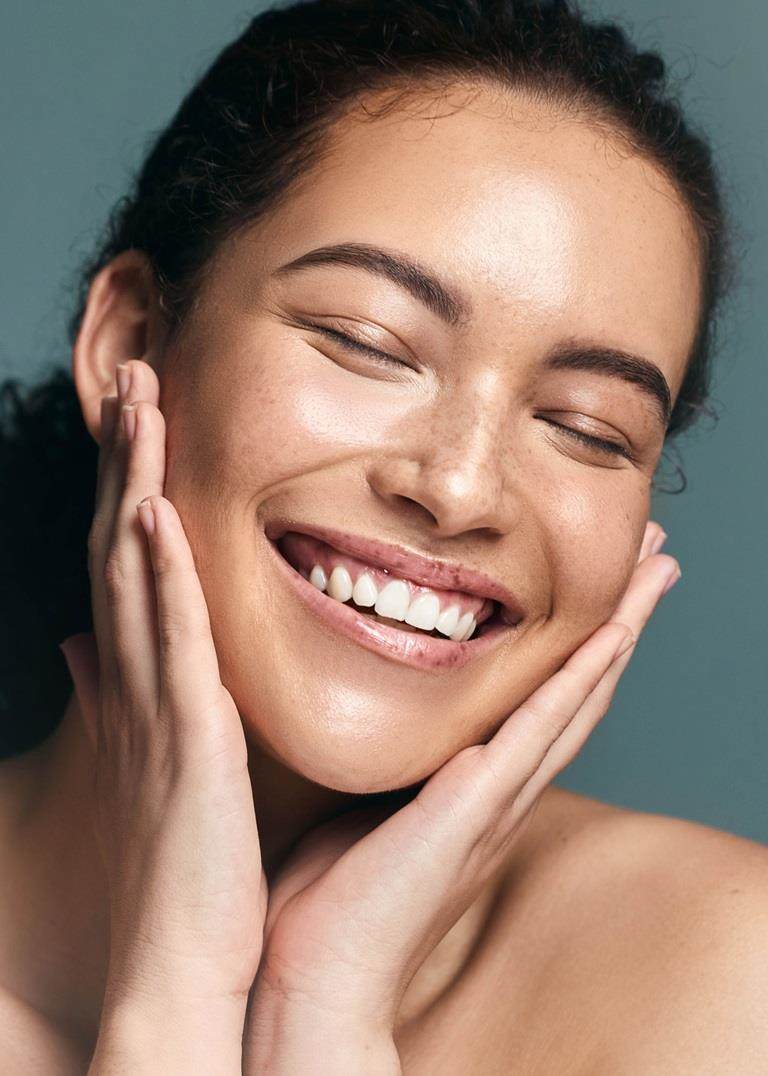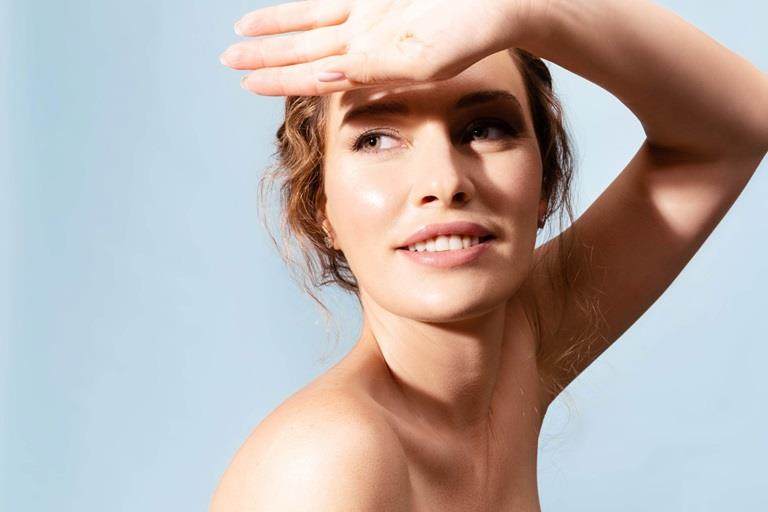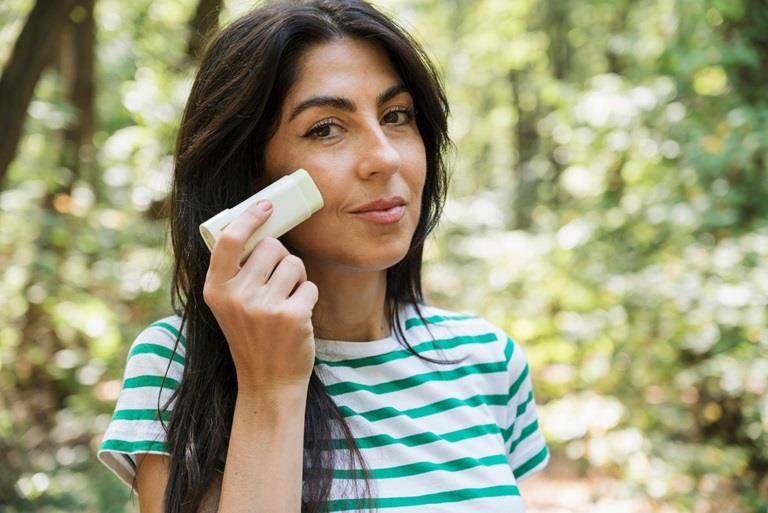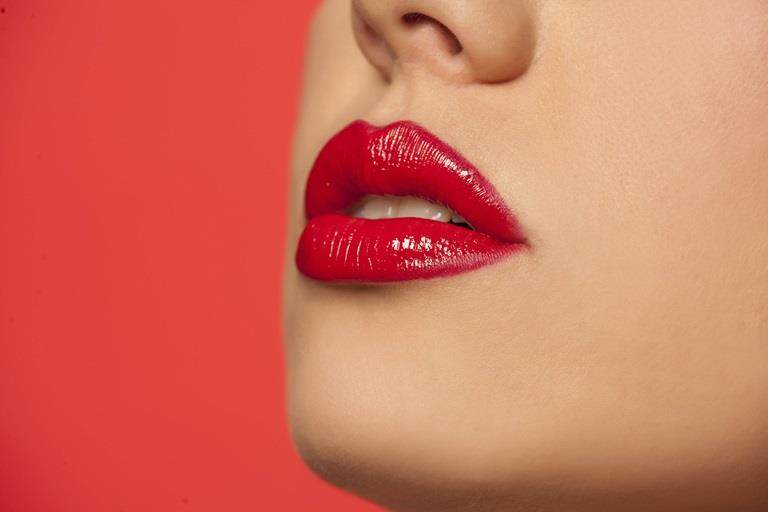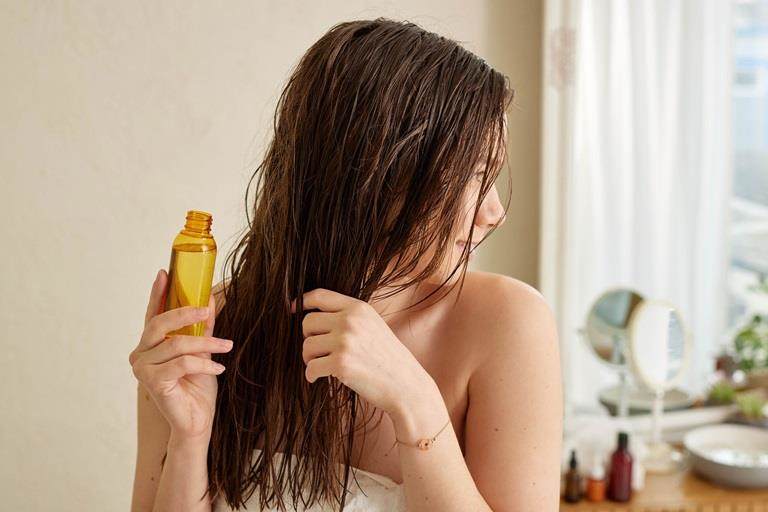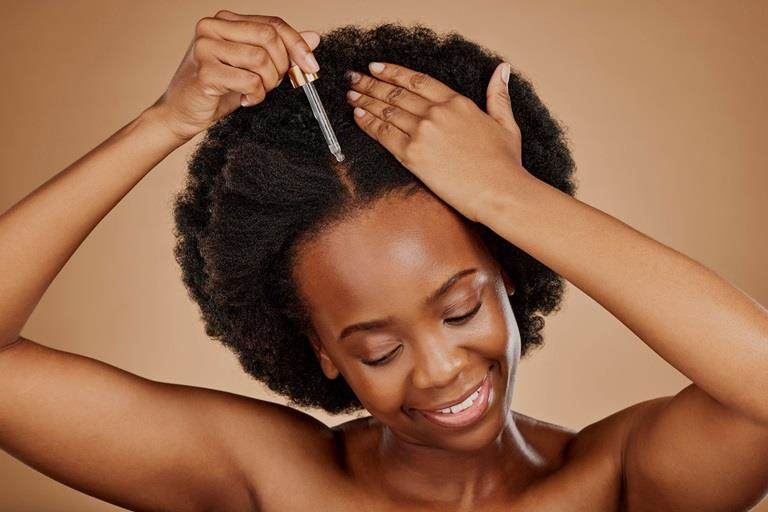What is the climate adaptive beauty trend?

Climate adaptive beauty refers to beauty products specifically formulated to perform under diverse and shifting environmental conditions, such as extreme heat, humidity, pollution, dryness, UV exposure, and temperature fluctuations. These products are designed to protect and rejuvenate the skin and hair in response to changing climate stressors.
The concept is grounded in the recognition that climate change is no longer a distant threat—it is a present reality affecting consumers’ everyday lives. From wildfire smoke in California to air pollution in urban Asia and Arctic winds in Northern Europe, environmental stressors are impacting the skin and hair in more complex and varied ways than ever before.
We see this reflected in consumer behaviour in a variety of ways. According to the WGSN report "WGSN Trend Curve: What's Next for Coily Haircare" the percentage of social media conversations about hair care which reference climate protection has risen from 13% in 2018 to 23% in 2023. Google trends shows interest in the term “climate adaptive” continuing to rise every year since 2022. Mintel also tracks an increasing number of disruptors in the beauty industry making climate adaptive beauty claims. [link] All indications that consumers are now seeking products that adapt as quickly as the climate does.
At Croda Beauty we have previously used the term geoskincare to refer to this trend and while the core concept is largely the same, the language has shifted somewhat. In part because this trend encompasses more than skin care alone.
Climate adaptive beauty emphasises the following aspects:
- Protection against environmental factors (UV radiation, pollution) as well as extreme conditions like cold winters, hot summers, or high altitudes.
- Climate-appropriate ingredients well suited to a specific climate.
- Climate confident formats e.g. sticks that won’t melt in high temperatures.
- Adaptative routines and formats to accommodate the skin and hair’s changing needs due to seasonal changes or varying weather conditions.
- Tailored recommendations to help individuals make informed choices for their skin and hair care needs.
- Products whose manufacture and ingredient sourcing have a lesser impact on the environment compared to traditional products.
Who is the climate adaptive beauty trend for?

The climate adaptive beauty trend particularly resonates with the following groups:
- Global Travellers and Digital Nomads. These consumers frequently move between climates—hot to cold, dry to humid, urban to rural. They want skin and hair care products that work seamlessly across environments without requiring a complete overhaul of their routines.
- Urban Consumers. City dwellers face a unique cocktail of environmental stressors, including air pollution, high UV exposure, and temperature extremes. Climate adaptive products can offer targeted protection and support for skin and hair that’s constantly under environmental assault.
- Skin care Savvy Millennials and Gen Z. These generations are highly informed and expect performance from their beauty products. They understand the impact that climates can have on their skin and hair and are looking for innovative, science-backed solutions that fit their fast-paced, socially conscious lifestyles.
- Sustainability-Conscious Buyers. Consumers who care about climate change and environmental responsibility are also drawn to products that reflect an awareness of these issues. Climate adaptive beauty fits within a broader desire for eco-ethical innovation, especially when paired with sustainable packaging, cruelty-free formulations, and carbon-conscious sourcing.
What do you need to know about the climate adaptive beauty trend?
For brands, retailers, R&D teams, and investors, climate adaptive beauty is not just a product trend—it’s a strategic opportunity to meet evolving consumer needs and gain a competitive edge in a crowded marketplace. Here's what businesses need to consider:
1. Sustainability
Consumers aware of the impact of climate are also likely to seek eco-friendly, sustainable products, so marketing on the climate adaptive beauty trend comes with a consumer expectation to also reduce the impact that the product has on the environment.
Sustainability factors to consider include:
- Water efficiency in the product manufacture and use phases.
- Reduction of carbon footprint in ingredient sourcing and manufacture. Key to this is understanding what the carbon footprint of your ingredients are, something Croda Beauty is well equipped to help with as we have more than 1,550 PCF statements available across our portfolio.
- Ingredient sourcing that lessens impact on the environment, particularly for actives and botanicals. This could take the form of raw materials that have been third-party certified as having been cultivated using sustainable farming practices or technologies such as Plant Cell Culture which help to preserve plant species.
2. Environmental intelligence is the new luxury
Modern consumers are increasingly aware of their surroundings and want products that reflect the realities of their local environment. Climate adaptive products signal a brand’s responsiveness and intelligence, placing it ahead of the curve in personalisation and care.
This is driving demand for climate-targeted products, such as:
- Hybrid products – particularly adding sun protection or climate protection capabilities to hair care and cosmetic products. You can find out more in our hybrid beauty blog.
- Humidity-responsive moisturisers.
3. Formulation science must evolve
Creating truly climate adaptive products means formulating for versatility and performance. Ingredients must be:
- Stable across temperature extremes.
- Non-comedogenic under high humidity.
- Protective against oxidative stress from pollution and UV.
- Capable of maintaining hydration in both arid and damp environments.
Biotechnology, adaptogenic botanicals, encapsulation technologies, and smart emulsifiers are playing a central role in making this possible.
Climate adaptive beauty ingredients
17 items available
Croda ingredients which meet the climate adaptive beauty trend
Across sun care, skin care and hair care applications we produce a variety of ingredients which can help brands meet this trend.

Sun protection
Sun protection is a part of many consumers’ daily routines, and increasingly so due to the effects of climate change. Daily sun care options need to avoid some of the hassle of sun screens such as white tints or sticky sensories.
Solaveil™ Clarus and Solaveil™ MicNo are our hero SPF actives for daily wear formulations.
Solaveil Clarus technology delivers a tightly controlled particle size distribution. As a result, the undesirable whitening effect typically associated with minerals is effectively eliminated, while the SPF and UVA efficacy remains uncompromised. Solaveil MicNo is an innovative range of ZnO powders based on patented, platelet-shaped structures that are micron sized yet transparent when applied onto skin.
Both are therefore extremely versatile and suitable for a wide range of end applications, making them ideal to add sun protection to hybrid products for a wide range of skin phototypes.
Mel[o]stem™ can help repair damage caused by UV exposure. It regulates melanocyte life disorders and hyper and hypopigmentation, the dark and white spots that result from prolonged exposure to the sun. Produced using plant cell culture, Mel[o]stem's manufacturing process consumes 35x less water and preserves 100x land footprint compared to traditional plant cultivation**, as well as offering 100% manufacturing waste recovery.
Crodasorb™ UV-283 is a patented, high activity quaternised UV absorber that protects hair from sun by preventing UVB damage while ChromAveil™ protects the hair from the damaging effects caused by exposure to sunlight (UVA and UVB).
Too dry or too wet
Higher temperatures can make hot places hotter and humid places more humid, but they also create increased variability in both and neither skin nor hair like to be too dry or too hot.
Capable of adapting to the surrounding environment, DuraQuench™ IQ SA optimises skin hydration by regulating water loss from the skin at different temperatures and humidities.
More humidity means more frizz. Hair naturally absorbs water, with the absorption rate influenced by its level of damage. When humidity increases, water molecules from the air penetrate the hair fibre and disrupt hydrogen bonds found in the hair cortex unpredictably. This leads to a change in hair’s structure with the formation of frizz and undesirable volume.
Thanks to its low molecular weight, Prolevium™ is thought to maintain the perfect style and protect the hair from frizz through two different mechanisms:
- By penetrating into the hair fibre and providing moisture regulation in the cortex.
- By forming a barrier at the surface of the hair to slow moisture entry into the hair fibre
Prolevium offers a combination of moisture-balancing and film-forming properties that work synergistically to protect our hair from humidity variation. Prolevium is 99% naturally derived according to ISO 16128; REACh compliant; non-GMO; PE-free. You can read more here.
Pollution and other environmental aggressors
The term air pollution may conjure images of exhaust pipes and smoke belching factories, but it actually refers to any air particulate with harmful effects, many of which (Saharan dust, wildfire smoke, pollen release) are exacerbated by climate changes.
Citystem™ protects against both environmental and screen light pollution damage to the skin. It can also restore autophagic functions that can be altered by pollution, helping to detoxify skin cells.
Luceane™ acts on the skin holobiont to reinforce barrier function, reducing the damage that air pollution can have on skin. Luceane uses a unique bacteria sampling (2009 UPEI collection expedition) with full traceability (bacterial strain preserved in 3 locations). It is readily biodegradable and supports the production of RSPO-certified sustainable palm oil by using the Mass Balance supply chain model.
FibraShield™ C, is a protective peptide derived from chickpeas that fights oxidative stress inside and out to preserve hair longevity with a 95% reduction in reactive oxygen species. It proactively protects both the hair cortex and cuticles from the damaging effects of environmental aggressors and helps to maintain hair health throughout life. Fibrashield C is 98.9% derived natural (ISO 16128) and Readily Biodegradable (OECD 301B), and COSMOS approved.
Climate adaptive beauty formulations
Formulating for climate-adaptive beauty

Daily sunscreens are a key product in climate adaptive beauty. Modern consumers are well aware of the damage UV exposure has on their skin and how important a daily sun protection product is. A daily product needs to deliver a great sensorial and no whiteness. The fluid facial lotion SPF 30* has a light skin feel and is transparent on the skin. It contains Crodamol™ ISIS to provide excellent skin moisturising properties, while the combination of Solaveil™ CT-300 and Solaveil CZ-300 provides broad-spectrum protection from solely inorganic sun filters. The light hybrid sunscreen SPF 50+* is another example which combines a light sensorial experience with good transparency.
Sticks are gaining popularity as a format for sunscreens, especially amongst global travellers and sustainability conscious buyers due to their portability, light weight, and a growing perception that they have a lower water-use impact than traditional sun creams – though this can vary significantly depending on formulation and packaging. This naturally shielding sun stick SPF50* is ideal for on-the-go application. The waterless formulation combines anhydrous ingredients to deliver a convenient and easy-to-use sun stick that provides powerful protection from the sun’s rays, no matter where your day takes you. Composed entirely of ingredients with 100% natural origin according to ISO16128, the stick format is achieved through the combination of waxes, including Syncrowax™ HRC and Syncrowax ORM, which provide a firm structure without compromising on pay-off or sensory.
Hybrid products also play a role. For global travellers, hybrid products represent a way to get a wide range of benefits in as few products as possible, meaning less to pack and carry. The same reasoning can make hybrid choices more sustainable too; a product that combines sun protection with foundation not only means less overall product but also less packaging and shipping than two separate products.
This ceramide shield foundation stick SPF 50* combines sun protection and moisturisation in one handy stick format. This multi-functional formula combines the lightweight moisturising properties of Crodamol™ GTCC with the smooth application of Syncrowax™ SB1 MBAL for a velvety finish, as well as Solaveil™ XT-300 for broad spectrum UV protection from a single ingredient.
Hybrid products can comprise colour cosmetics too, such as this this crimson veil lipstick SPF 20*, that delivers a timeless look and ensures that your lips stay protected from UV rays, no matter what the season.
For hair protection, there’s the bio-engineered hair shield; developed to protect hair from the main environmental aggressors and containing a combination of our high-performance bioactive ingredients: Crodasorb™ UV-283, which offers protection against structural damage caused by UVB, Heliogenol™, which offers protection against colour damage caused by UVA, Cropeptide™ W, capable of regulating fibre hydration in different RH (relative humidity) situations and Crodamol GTS, for shiny, healthy-looking hair.
This smoothing armour hair mask has a union of specially selected ingredients that promote capillary shielding, combining protection and restoration with intense brightness and high conditioning.
The scalp recovery & resistance concentrate aims to repair damage to the scalp caused by its biological responses to environmental aggressors that can cause inflammation, metabolic dysregulation, microbiome imbalance, etc. It contains Hairspa™[link], a natural prebiotic complex, Phytessence™ Hazel Leaf MBAL, a botanical extract with anti-inflammatory and antioxidant action, and Procapil™, a bioactive ingredient that strengthens the leather structure, accelerating hair growth and preventing hair loss.
*SPF regulations and claims vary by country. Information and formulations provided in this blog are provided for inspiration and may not reflect the specific labelling, testing or marketing requirements in your country/region. Such Information and formulations should not be relied upon for the purposes of making statements about SPF. Croda formulation pages contain more information about the specific testing conducted and the country/location of the laboratory that has created the formulation. Always refer to your local regulatory guidelines for accurate SPF claims.
**comparative study against plant cultivation.





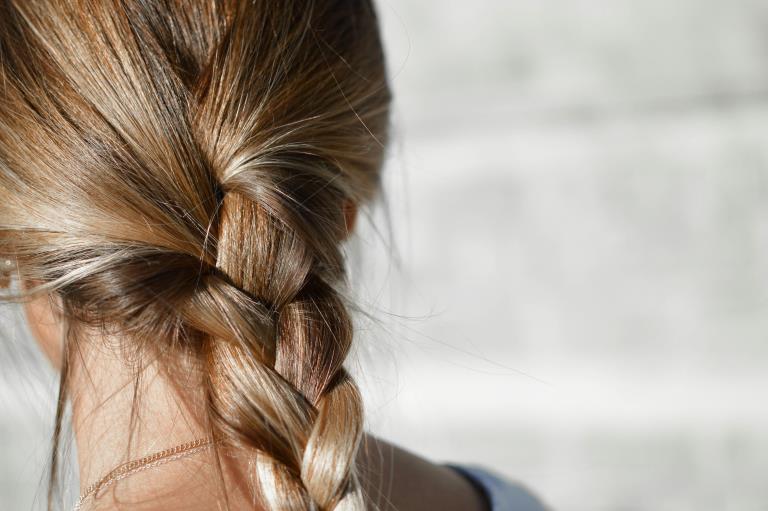
.jpg&mn=beauty&w=768&xr=0&yr=0&xfp=6&yfp=6&hash=3E0BBF9303E7B5E2FAB8DC32FDBF4BA719C138999FEC74AA)

.jpg&mn=beauty&w=768&xr=0&yr=0&xfp=6&yfp=6&hash=A11B8228881BCC31AF5437C1484B055219C138999FEC74AA)
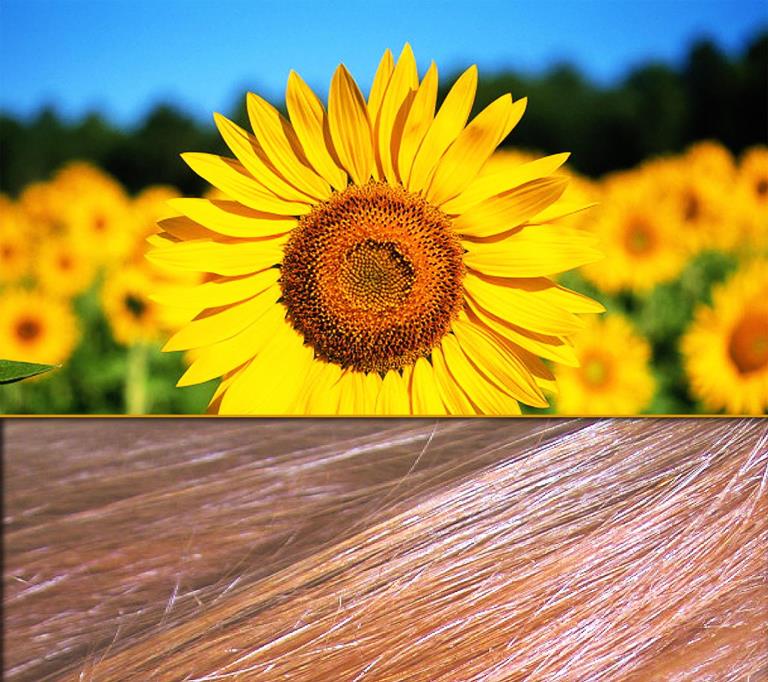

.jpg&mn=beauty&w=768&xr=0&yr=0&xfp=6&yfp=6&hash=0DF5F2B6281680CBFB6330AAFB6AD15D19C138999FEC74AA)

.jpg&mn=beauty&w=768&xr=0&yr=0&xfp=6&yfp=6&hash=733B36D134DCAC67202EB7308F77DF6019C138999FEC74AA)


